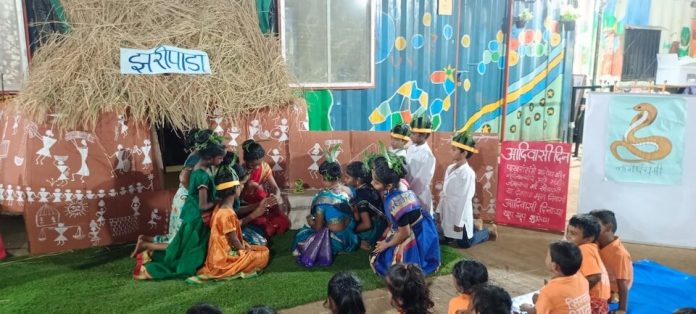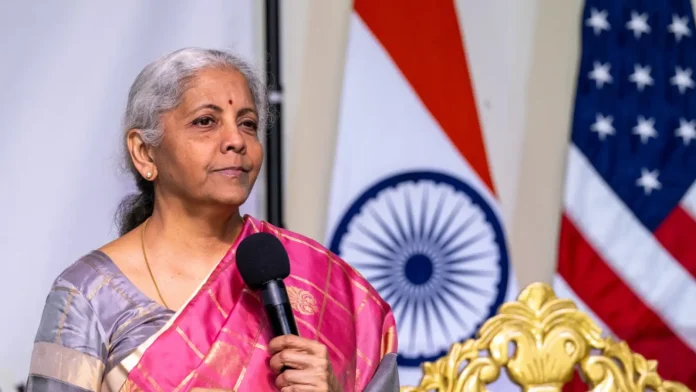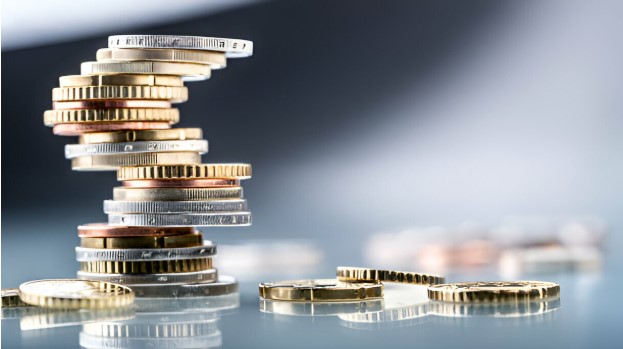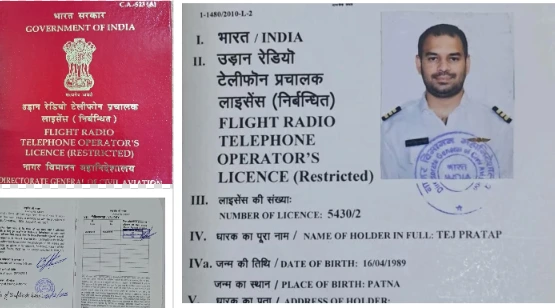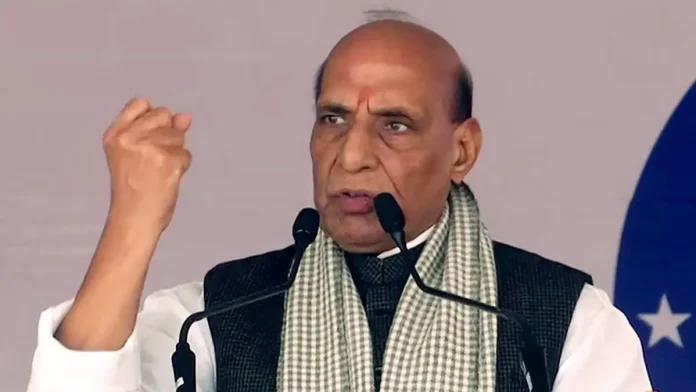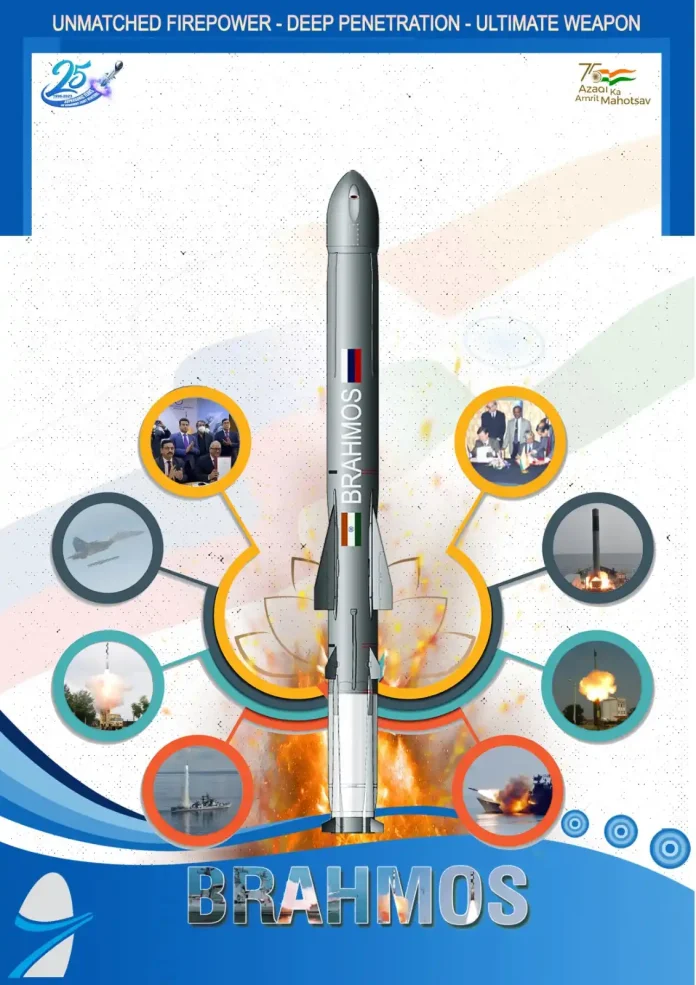CSR Initiative Drives Educational Upliftment for Girls and Women in Rural India
Titan Company Limited, in partnership with IIMPACT, today marked a major milestone by unveiling a powerful campaign around its flagship CSR initiative – Titan Kanya. Titan Kanya, through its dedicated focus on structured education, has transformed the lives of over 74,000+ girls and women across some of India’s most underserved regions in the last financial year alone. The creative film is a celebration of the power of literacy, and the evolving role of daughters in fostering education for their first role models – their mothers. Evoking a deep sense of India’s rural emotional dividend, the film beautifully captures the journey of women who, despite being deprived of formal education, have chosen to rewrite their stories.
Founded on the conviction that educating a girl empowers her and her community, Titan Kanya operates across Tamil Nadu, Karnataka, Uttarakhand, Uttar Pradesh, and West Bengal, reaching some of India’s most underdeveloped districts with tailored educational interventions and holistic support systems.
Through its remedial education and after-school Academic Support Centres, Titan Kanya has engaged 8,787 girls in Tamil Nadu and Karnataka, equipping them with literacy and numeracy skills, sports and life-skills training, technology-enabled personalised learning via Mindspark, and essential school-supplies kits. In Uttarakhand, Uttar Pradesh and West Bengal, 400 learning centres have served 13,344 girls and women, while the model school initiative at Udham Singh Nagar has benefitted 3,917 girls with dedicated STEM labs and strengthened school infrastructure. In 2024, the program’s fourth phase reached 5,696 tribal girls across eight Kasturba Gandhi Balika Vidyalayas and two government schools in Tiruvannamalai and Cuddalore, integrating remedial classes and experiential science education.
“Our ambition is to reach and transform the lives of 100,000 girls and women, every year, over the next three years,” said Mr. C K Venkataraman, Managing Director, Titan Company Limited. “By going where others don’t, Titan Kanya has become a model of excellence—improving attendance, reducing drop-outs and fostering holistic development. The Mothers’ Literacy Program deepens this impact by empowering women as lifelong learners and community advocates.”
The comprehensive Kanya Sampoorna Program in Yadgir and Cuddalore has engaged 42,707 girls from early childhood through adolescence, offering libraries, experiential science modules, career guidance, vocational training and scholarships. Building on the success of educating daughters, Titan Kanya has now launched a Mothers’ Literacy Program, with hundreds of mothers enrolling in foundational literacy classes. Building on the belief that “educating a girl is equivalent to empowering her,” this new initiative offers foundational literacy, numeracy and digital-awareness classes for mothers.
Mr. N E Sridhar, Chief Sustainability Officer, Titan Company Limited, added, “Our decade-long partnership with IIMPACT and the Titan Kanya initiatives to empower women has played a crucial role in augmenting education at the grassroots level, across rural economies. From early-grade reading in Anganwadis to third-party impact assessments, every step reinforces our Tata philosophy, creating sustainable change in the most underserved communities.”
Titan employees have also volunteered as mentors—over 400 staff supporting girls through academic sessions, life-skills workshops and “Titan ECHO,” a 2020 fundraising drive that benefited 14,165 girls. Currently, Titan Company allocates 20% of its CSR budget towards the Kanya initiative and continues rigorous M&E to refine program design. As Titan Kanya scales STEM engagement, scholarships and vocational pathways, it remains committed to its core mission: educating girls, uplifting mothers and transforming communities.
Disclaimer: This media release is auto-generated. The CSR Journal is not responsible for the content.
India’s Finance Ministry Issues Draft Climate Finance Taxonomy, Targets Billions for Climate Action
The Government of India has taken a significant step towards accelerating the nation’s green transition by releasing the draft framework of India’s Climate Finance Taxonomy. Announced by the Ministry of Finance in line with the 2024-25 Union Budget, the draft aims to channel much-needed capital into climate adaptation and mitigation efforts, supporting India’s commitment to achieve net zero emissions by 2070 and the developmental vision of ‘Viksit Bharat’ by 2047.
The draft framework serves as a classification system to identify activities, projects, and technologies that are in harmony with India’s climate action goals and the broader green transition pathway. Its main objective is to facilitate greater resource flow to climate-friendly sectors, ensuring both emission reduction and long-term access to reliable, affordable energy.
India’s climate ambitions are vast, with targets to reduce the emissions intensity of its economy by 45% by 2030 and transition to about 50% electric power from non-fossil sources in the same period. Meeting these goals will require enormous investments-preliminary government estimates peg the need at around $2.5 trillion by 2030 for the climate transition, with the energy sector alone requiring $250 billion annually till 2047.
The draft taxonomy is designed to address these challenges by providing clarity to investors, banks, and policymakers on what qualifies as a climate-aligned or transition-supportive activity. It seeks to prevent “greenwashing”-the misrepresentation of activities as being environmentally friendly without genuine impact-by establishing clear, science-based, and transparent criteria for inclusion.
The taxonomy will classify activities into two main categories. “Climate-supportive” activities are those that directly contribute to emission reduction, adaptation to climate impacts, or research and development in these areas. “Transition-supportive” activities are those that help sectors-especially hard-to-abate ones like cement, steel, and aluminium-move towards lower emissions, even if absolute emissions avoidance is not yet feasible. The framework also covers sectors such as power, mobility, and buildings for mitigation and adaptation, as well as agriculture, food, and water security for resilience building.
Supporting Indigenous Technologies
A unique feature of the Indian taxonomy is its emphasis on supporting indigenous technologies and recognising the specific developmental needs of the country. It aims to be consistent with international frameworks while maintaining flexibility to address India’s national priorities and circumstances.
The Ministry of Finance has invited comments and suggestions from stakeholders and the public on the draft framework until 25th June 2025. The feedback received will be considered before finalising the taxonomy, which will later be expanded with sector-specific annexures detailing eligible activities and measures.
Officials highlight that this taxonomy will not only guide investment towards impactful climate solutions but also serve as a blueprint for other developing countries facing similar challenges. The government hopes that, by providing a clear and credible framework, it will unlock both public and private finance at the scale required for India’s ambitious green transition.
CSR News: Non-profit Foundations Empower 6,000+ Lives with Anganwadi Transformation in Pune
In a significant step toward nurturing wellbeing in communities, the Mars Wrigley Foundation, in partnership with Smile Foundation, inaugurated transformed Anganwadi Centers (AWCs) in Rajguru Nagar and Moshi, Pune on March 25, 2025. Launched in May 2024, the initiative focuses on improving health, nutrition, and education services for women and young children in underserved communities. The completion of these upgraded centers marks a milestone in Mars Wrigley Foundation’s ongoing efforts to improve lives by strengthening social connections through social infrastructures that create healthier, more resilient communities.
The Anganwadi Transformation Project has revitalized 10 AWCs, impacting 13 centers overall. To date, the initiative has benefited 1,562 individuals, including children, lactating mothers, pregnant women, and adolescent girls, while indirectly supporting 4,660 community members. Key highlights of the project include the establishment of 202 kitchen gardens to enhance nutrition, 30 health and hemoglobin screening camps, and two specialized training programs for frontline workers to strengthen community health support. Additionally, 165 awareness sessions have been conducted to educate and empower the community, alongside the distribution of essential resources and the creation of 11 instructional materials for Anganwadi workers and local families.
“At Mars Wrigley, we are committed to creating lasting change in the communities where we live and work. Our collaboration with Smile Foundation goes beyond infrastructure improvements—it’s about fostering environments that drive better health, education, social connection and overall well-being. The transformed Anganwadi Centers stand as beacons of hope, opportunity, and progress for children and families. The positive response from beneficiaries has been inspiring, reinforcing our belief that collective action leads to sustainable impact. We remain dedicated to initiatives that uplift and empower communities,” said Rohit Sharma, Interim Supply Director, Mars Wrigley India.
“Children are the future of the nation. Hence, child development is an important, comprehensive and collective mission wherein the civil society and the corporate can play a complementary role in strengthening the government’s endeavours. We thank Mars Wrigley and the Mars Wrigley Foundation for their trust and the association for this beautiful initiative,” said Mr. Santanu Mishra, Co-founder & Executive Trustee of Smile Foundation.
The Mars Wrigley Foundation’s Community Connection Grant Program continues to support underserved communities by creating, restoring or improving shared community spaces. Projects aim to address specific local needs, ultimately improving the quality of life for residents. By partnering with local organizations, the Foundation aims to strengthen community ties and improve overall well-being. The inauguration event witnessed participation from the Pune Plant Team, Smile Foundation representatives, government officials, and beneficiaries, highlighting the collective effort to create sustainable community impact.
Disclaimer: This media release is auto-generated. The CSR Journal is not responsible for the content.
Adani Green Achieves Global Milestone: First Renewable Power Firm to Become Water Positive
Adani Green Energy Limited (AGEL) has become the first renewable energy Independent Power Producer (IPP) among the global top 10 to be certified as water positive and achieved this feat a full year ahead of its FY26 sustainability target. The certification, granted by international assurance firm Intertek, followed a detailed audit of AGEL’s water usage and conservation efforts across 103 operational power sites and 85 conservation locations.
This recognition highlights AGEL’s role not only as a clean energy leader but also as a pioneer in large-scale water stewardship. In a country like India, where water scarcity remains a persistent challenge, this milestone is not just a corporate accomplishment but a major leap toward sustainable industrial practices.
From the start, AGEL had set out with a limited goal to make over 200 MW of its assets water positive. However, after meeting that target in FY23, the company extended its vision to include its entire 14 GW operational portfolio, which now meets water positivity standards. This ambitious goal was met a full financial year ahead of schedule.
AGEL Turns Arid Zones into Water-Wise Renewable Hubs
The company’s solar and wind installations are located in some of India’s most water-stressed regions, such as the Khavda desert in Gujarat and the arid zones of the Thar desert. Yet, AGEL has managed to turn these tough terrains into hubs of sustainable resource management. It implemented multiple conservation strategies including rainwater harvesting, reviving traditional water bodies, and pilot projects for drinking water generation from air.
A standout innovation in AGEL’s water-saving strategy is the use of robotic dry-cleaning technology on over 54% of its solar modules. This alone has saved an estimated 546 million litres of water per year. Additionally, the restoration of 85 ponds has benefited over 1.23 lakh people, many of whom belong to water-scarce communities. In tangible terms, AGEL’s total water replenishment equals the volume of 467 Olympic-sized swimming pools exceeding the half-year water needs of Lakshadweep.
AGEL’s spokesperson said, “India is among the countries with the most acute water security challenges. Our goal has always been more than generating renewable energy; we aim to build it in the most sustainable way possible.” The company’s broader environmental goals include becoming single-use plastic free and achieving zero waste to landfill milestones AGEL has also reached across its operational sites.
AGEL Sets Model for Climate -Resilient Green Energy
As global industries grapple with rising climate and water risks, AGEL’s approach offers a replicable model. Through the combination of cutting-edge technology and community-based water initiatives, the company has aligned its energy mission with environmental and social priorities.
By becoming the first renewable energy company in the world of its scale to turn water positive, Adani Green has raised the bar for what sustainability in energy infrastructure can look like showing that industrial growth and environmental care are not mutually exclusive but must go hand-in-hand.
CSR News: HDFC Bank Parivartan inaugurates STEM Science Labs in Maharashtra schools, to benefit children with hearing challenges
Mumbai, India: HDFC Bank, under its CSR initiative Parivartan, inaugurated Accessible STEM Science Centres in Mumbai and Pune as part of the ‘STEM Without Barriers’ programme. This initiative, aimed at fostering inclusive education, establishes mini science labs in special schools for children who are deaf and hard of hearing. The initiative has been implemented across 35 special schools in India, with 10 of these located in Maharashtra.
Through this project, 885 students from Classes 5 to 10 in Pune and Mumbai will gain access to specially curated STEM content translated into Indian Sign Language, enabling them to explore and understand scientific concepts in an accessible, engaging format. The project also includes teacher training, ongoing mentoring, and the further development of accessible content.
Inauguration ceremonies were held at Aadhar Mookbadhir Vidyalaya in Pune and Bombay Institution for Deaf & Mutes in Mumbai. These events marked the formal handover of fully equipped STEM labs to the schools, supporting a broader vision of inclusive, technology-enabled education.
Funded by HDFC Bank for a period of three years, this industry-first initiative represents a collaborative approach to fostering innovation, accessibility, and modern education in special schools. The project builds on a successful pilot in Karnataka and will continue until March 2027, with similar inauguration events planned across all participating schools.
Speaking about the initiative, Kaizad Bharucha, DMD, HDFC Bank, said, “We believe that access to education should be equitable and inclusive. Through this initiative, we aim to co-create learning environments that are sensitive to the needs of all children, including those with hearing challenges. It is our privilege to partner with schools and educators who are doing inspiring work in this space, and we remain committed to supporting their efforts.”
The project was first piloted successfully in Karnataka, covering 13 schools, and has now expanded across five states.
The inauguration events were attended by senior representatives from HDFC Bank including Mr Santosh Ingale, Ms Smeeta Jaybhaye, and Mr Pankaj Seth, alongside key partners from the implementation agency–Mr Narendra Pandey (CSR Manager), Mr Gururaghavendra (Education Head), and Mr Lokesh (Project Manager).
This initiative is a part of a broader strategy under HDFC Bank Parivartan’s Promotion of Education pillar. It reaffirms HDFC Bank Parivartan’s mission to support inclusive growth and create long-term impact by enabling communities and helping them to become self-reliant.
Disclaimer: This media release is auto-generated. The CSR Journal is not responsible for the content.
How Currency Volatility Affects Developing Economies
Coming to Grasp with the Shockwaves of Currency Volatility
Currency volatility, the erratically unpredictable fluctuation in foreign exchange rates, can have profound impacts upon the economies of nations. All nations are subject to some degree of exposure to currency shifts, but developing economies are particularly susceptible. Their generally weak banking systems, reliance on imports and foreign investment, and limited monetary resources render them uniquely responsive to outside shocks.
This piece examines how currency volatility impacts developing economies, breaking down its role in trade, inflation, investment, and debt sustainability. It offers general observations too on how players of the global financial arena, including those observing trends through platforms such as MT4 or other forex platforms, may view such fluctuations in the context of emerging economies without being investment advice.
1. What Is Currency Volatility?
Currency volatility is the frequency and size of exchange rate changes. It is caused by a range of factors, including:
-
Changes in interest rates
-
Differentials in inflation
-
Political instability
-
World commodity prices
-
Monetary and fiscal policy choices
In forex markets, investors and traders watch for volatility to gauge possible risk and prospects. Some trading platforms, such as MetaTrader 4 (referred to as MT4), offer tools to observe these fluctuations with technical indicators and live data. Still, one needs to differentiate between short-term speculative demand and the wider economic implications that currency volatility can exert, especially in less economically stable areas.
2. The Impact on Trade and Balance of Payments Export Competitiveness and Import Costs
Depreciation of the currency may also increase a nation’s export competitiveness in the short term by rendering domestic products more affordable for importers. Again, though, this gain comes at a steep price, costlier imports. Developing nations, most of which depend on imports of staple goods like fuel, foodstuffs, and capital equipment, may have rising costs cut into the benefits of rising exports.
When exchange rates jump sharply, it becomes challenging for companies to set prices for their products and to predict costs, discouraging cross-border trade completely. This breeds uncertainty in the balance of payments and promotes use of foreign reserves to stabilize the currency, capital that most developing countries cannot sacrifice.
Foreign Exchange Reserves and Interventions
To offset steep currency fluctuations, central banks can intervene in foreign exchange markets either by purchasing or selling currencies. Although, at times, such actions become unavoidable, they can exhaust foreign reserves very fast. In nations with low reserves, this strategy can help in the short term only, but it opens up the economy to further fluctuation risks in the long run.
3. Inflationary Pressures and Monetary Policy Constraints Imported Inflation
A volatile or weakening currency can quickly translate into higher domestic prices. Known as imported inflation, this phenomenon occurs when the cost of imported goods rises due to a weaker local currency. In economies where a large portion of consumption depends on imports, the impact on household budgets can be significant.
Limited Policy Options
Emerging economies usually do not have the strong institutional mechanisms in place to effectively control inflation. Increasing interest rates to curb inflation, for example, can inhibit already weak growth and discourage investment. Reducing rates, on the other hand, can aggravate inflation and further depreciate the currency. This tightrope walking hinders policymakers’ capacity to react forcefully, particularly when there is global economic uncertainty.
4. Investment Climate and Capital Flows Foreign Direct Investment (FDI)
Unstable movements in exchange rates can discourage long-term foreign investment. Investors are usually looking for stable returns environments, and currency volatility adds a component of risk that might not be compensated by expected gains. This applies in particular to infrastructure and industrial investments in emerging economies, where high initial costs and long payback periods enhance the currency risk.
Portfolio Flows and Investor Sentiment
Short-term capital flows are even more responsive to currency volatility. A sharp depreciation can trigger a rapid withdrawal of foreign money as investors rush to safeguard returns. Such “capital flight” events can stress local markets and lead to additional currency depreciation, creating a vicious cycle.
Certain market participants prefer trading on MT4, through which they can track indicators like capital flows, central bank policy statements, or geopolitical events to gauge currency risk in emerging markets. These tools can give some insight but are not predictive assurances and are subject to inherent uncertainties.
5. External Debt and Fiscal Vulnerability Debt Repayment in Foreign Currencies
Most developing countries have large holdings of their foreign debt in currencies such as the U.S. dollar or euro. As their local currencies decline in value, the actual cost of servicing such debt skyrockets. This can create fiscal pressures, increase interest expense, and, in the worst scenario, result in sovereign default.
Public Finances and Austerity Measures
Higher debt servicing charges can crowd out vital public expenditure on health, education, and infrastructure. In response, governments will be compelled to implement austerity measures, which will undermine long-term development and initiate social unrest. These pressures on the fiscal balance can further destabilize investor confidence and entrench economic instability.
6. Exchange Rate Regimes and Institutional Resilience
How a nation deals with its exchange rate can shape its exposure to currency volatility. Developing nations generally fit into one of three camps:
-
Fixed or Pegged Regimes: These are stable but take huge reserves to maintain the peg.
-
Floating Regimes: These let market forces set the rate but can be extremely volatile.
-
Managed Float Systems: These take elements of both and provide flexibility with intermittent interventions.
Resilience is not only a function of the selected regime, but also of the robustness of institutions. Clear governance, good central banking, and prudent macroeconomic policies can dampen volatility and cushion its impact. Countries that clearly communicate policies and maintain the rule of law tend to perform better in times of market stress.
7. Digital Platforms and Global Forex Participation
The advent of electronic trading platforms, including MT4 has expanded access to currency markets. Retail investors, institutional investors, and even corporates are now able to monitor and analyze real-time exchange rate information. For developing economies, this presents opportunities as well as challenges:
-
Opportunities: Increased transparency into market dynamics and price transparency.
-
Challenges: Greater vulnerability to speculative attacks and herd behavior.
Platforms like MT4 may provide analytical functions such as moving averages, Bollinger Bands, and economic calendars, that assist in interpreting market dynamics. Such platforms are not predictive models but interpretation tools, not certainties.
8. Mitigation Strategies for Developing Economies
Despite the very real challenges of currency volatility, developing economies are not without options. Some general strategies include:
-
Diversifying Export Bases: Less dependence on a narrow number of commodities or trading partners may insulate against external shocks.
-
Building Foreign Exchange Reserves: Challenging, but this can serve as a cushion in times of crisis.
-
Improving Debt Management: Composing debt with more local-currency obligations can reduce exchange rate risks.
-
Strengthening Institutions: Independent central banks, open policy systems, and legal certainty build investor confidence and policy credibility.
Conclusion: Navigating the Currency Crosswinds
Currency volatility is a two-edged sword, providing short-term benefits to exporters but posing high risks, particularly for emerging economies. Its consequences are wide-reaching, affecting trade balances, inflation, investment inflows, and government finances. While systems such as MT4 provide tighter monitoring of currency fluctuations, they cannot shelter countries from system vulnerabilities.
For policymakers, resilience is in structural reforms over the long term, sound fiscal management, and diversified economies. For market players, it is critical to understand the dynamics between currency movements and macroeconomic fundamentals, especially when dealing with emerging markets.
In today’s globalized world, the waves of currency movements in one part of the world can easily spread to another. Therefore, currency stability in developing economies is not merely a regional issue, it’s a global imperative.
देश के लिए जान भी गई तो खुद को भाग्यशाली समझूंगा’, तेज प्रताप यादव
Tej Pratap Yadav: भारत ने पाकिस्तान और पाकिस्तान अधिकृत कश्मीर (POK) के 9 आतंकी ठिकानों पर हमला कर पहलगाम हमले का बदला ले लिया है। भारत ने इस कार्रवाई को ऑपरेशन सिंदूर नाम दिया था। इस कार्रवाई के बाद पूरे देश में जश्न का माहौल है। हर कोई भारतीय सेना और केंद्र सरकार को इस पूरे ऑपरेशन के लिए बधाई दे रहे हैं। भारत की कार्रवाई के बाद अब राष्ट्रीय जनता दल के नेता और लालू प्रसाद यादव के बड़े बेटे तेज प्रताप यादव का बड़ा बयान सामने आया है। तेज प्रताप यादव ने कहा है कि, उन्होंने पायलट की ट्रेनिंग ली है और अगर यह ट्रेनिंग देशसेवा में काम आ जाए तो मैं खुद को भाग्यशाली समझूंगा।
मेरी पायलट की ट्रेनिंग देश के काम आ सकती है:Tej Pratap
पायलट की ट्रेनिंग अगर देश के काम आ सकती है तो,मैं तेज प्रताप यादव हर समय देश की सेवा के लिए तत्पर हूँ।
आपके जानकारी के लिए बता दू की मैने भी पायलट की ट्रेनिंग ले रखी है और देश के लिए मेरी जान भी चली जाए तो अपने आपको भाग्यशाली समझुगा।
जय हिंद…#TejPratapYadav #Bihar… pic.twitter.com/e5fmGfcNK7— Tej Pratap Yadav (@TejYadav14) May 7, 2025

